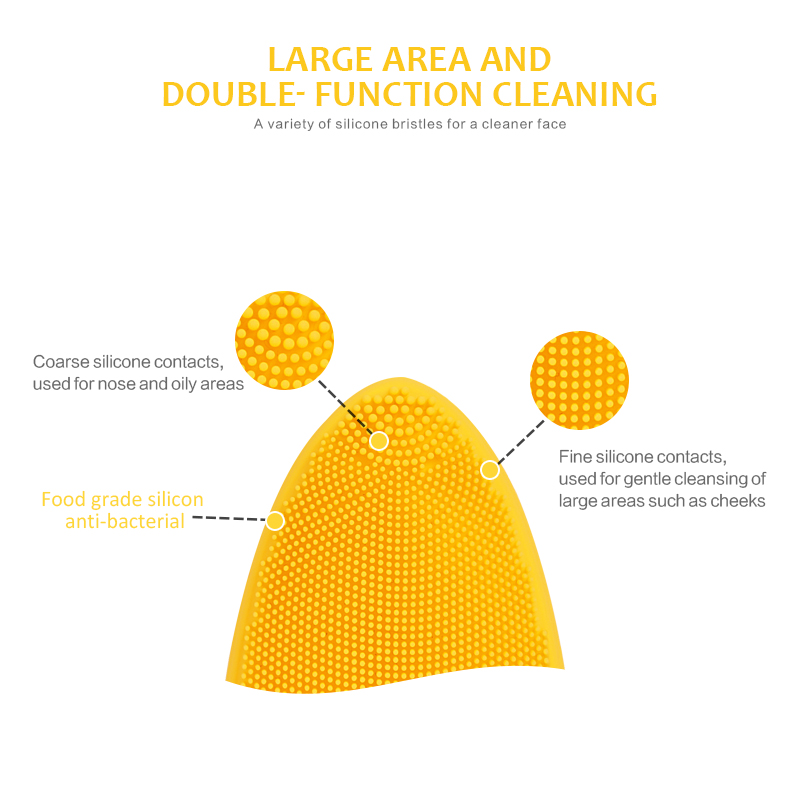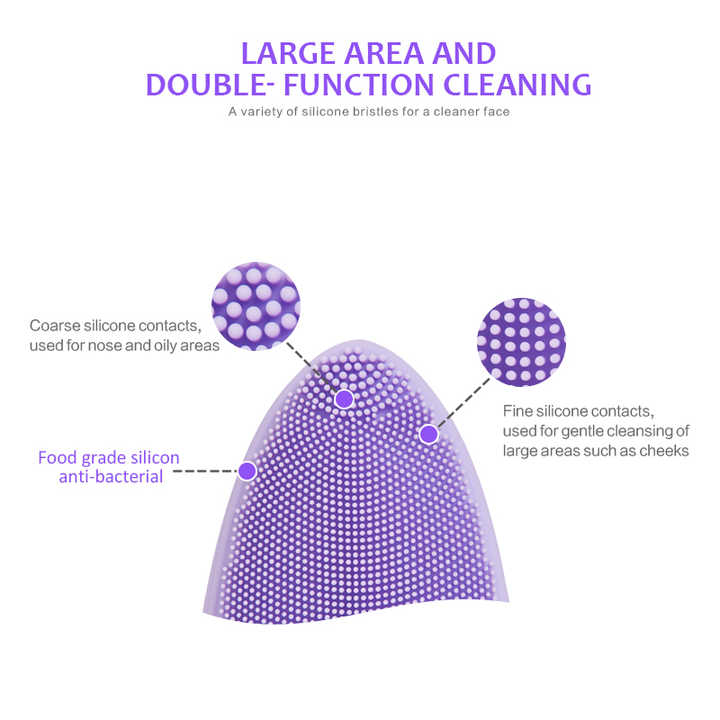Views: 0 Author: Site Editor Publish Time: 2025-07-23 Origin: Site








Makeup sponges are an essential tool for achieving flawless makeup application. Whether you're applying foundation, concealer, or powder, a good makeup sponge helps create a smooth, even finish. However, over time, makeup sponges can accumulate oil, dirt, makeup residue, and bacteria, which can cause skin irritation, breakouts, and even infections if not properly cleaned. Regular cleaning of your makeup sponges is necessary to maintain both the hygiene of your skin and the performance of your sponges. This comprehensive guide will walk you through why cleaning makeup sponges is important, the best cleaning methods, and tips for proper storage.

Makeup sponges are prone to bacteria accumulation. The primary function of a sponge is to absorb makeup, oils, and sweat from your skin. Over time, this buildup of residue can foster bacterial growth. When the sponge is reused without cleaning, it transfers these bacteria back to your skin, potentially leading to clogged pores, breakouts, or skin irritation.
For those with sensitive skin, dirty sponges can exacerbate conditions such as acne, eczema, and other skin inflammations. The buildup of oils and bacteria can also cause infections if left unaddressed. Cleaning your sponge regularly helps eliminate these harmful microorganisms and keeps your skin safe from irritation and infections.
A clean makeup sponge performs better than a dirty one. Over time, makeup residues and oils can clog the sponge’s pores, making it harder for the sponge to blend makeup seamlessly. If you use a dirty sponge, it can lead to patchy application, uneven blending, and an overall less flawless makeup finish.
A clean sponge is more absorbent and soft, ensuring that your makeup blends smoothly for a perfect finish. Regular cleaning preserves the texture and quality of your sponge, allowing it to apply makeup more efficiently and maintain its performance for a longer period of time.
To clean your makeup sponges properly, you'll need the following basic supplies:
Liquid Soap: Use a gentle liquid soap, such as baby shampoo or a specialized sponge cleanser. These soaps break down makeup residues without damaging the sponge. Avoid using harsh dish soaps or body washes, as these can deteriorate the sponge material.
Lukewarm Water: Lukewarm water is ideal because it softens the makeup buildup, making it easier to clean. Hot water can damage the sponge, causing it to lose its texture and shape over time.
Optional Additions: For a more thorough clean, you can use vinegar or rubbing alcohol to disinfect the sponge and remove stubborn buildup. These additives can also help kill bacteria, ensuring that your sponge is free of harmful microorganisms.
In addition to cleaning supplies, having the right tools can help make the cleaning process more efficient:
A Clean Towel or Microfiber Cloth: This will help absorb excess water from the sponge after cleaning. Blotting it gently helps maintain the sponge's shape while speeding up the drying process.
A Drying Rack or Storage Solution: A drying rack provides adequate airflow for the sponge to dry completely. If you don’t have a drying rack, you can also use an empty egg carton or any container with holes to help the sponge dry quickly.

Soaking the Sponge
Begin by soaking the sponge in lukewarm water. Gently squeeze the sponge to help the water penetrate the makeup residues and oils trapped inside. Lukewarm water is recommended as it helps break down the makeup without damaging the sponge’s material. Avoid using hot water as it can cause the sponge to lose its softness and flexibility.
Choosing the Right Cleanser
Once the sponge is wet, apply a small amount of liquid soap, such as baby shampoo, to the sponge. Gently massage the cleanser into the sponge using your fingers. Work the soap into all areas, especially those with visible makeup buildup. Be gentle to avoid damaging the sponge's texture. Massage in a circular motion to lift the makeup and residue from the sponge.
Thorough Rinsing
After massaging the soap into the sponge, hold it under lukewarm water and gently squeeze it. Continue rinsing until the water runs clear and no more makeup or soap residue remains. If the sponge still appears dirty or the water isn’t clear, repeat the cleaning process. The key to an effective cleaning is ensuring that no makeup residue, soap, or cleanser is left in the sponge.
Avoiding Damage While Drying
Once the sponge is cleaned, gently squeeze out the excess water. Avoid twisting or wringing the sponge, as this can damage its structure. Lay the sponge flat on a clean towel to air dry, or hang it upside down on a drying rack to ensure good airflow. It is essential that the sponge dries completely to prevent mold and bacteria growth.
The frequency with which you should clean your makeup sponge depends on how often you use it. For daily makeup users, cleaning your sponge every two to three days is recommended to prevent the buildup of oils and bacteria. For those who wear lighter makeup or use the sponge less frequently, cleaning it once a week is typically sufficient.
You can usually tell when it’s time to clean your sponge by its appearance, feel, and smell. Here are a few signs that your sponge needs a wash:
Visible Makeup Residue: If foundation, concealer, or other products are stuck inside the sponge, it’s time to clean it.
Odor: If the sponge has an unpleasant smell, it’s likely harboring bacteria and makeup residue, signaling the need for cleaning.
Greasy or Oily Feel: If the sponge feels oily or greasy, it’s time for a wash to remove the excess oils.
Once cleaned, storing your makeup sponge properly is crucial to maintain its shape and prevent bacterial growth. After cleaning, place the sponge in a dry, cool, and well-ventilated area. Allow it to dry completely before storing it to prevent the growth of mold and bacteria.
If you don’t have a dedicated sponge holder, you can repurpose common household items like an egg carton or a mesh bag. The goal is to ensure that the sponge has plenty of airflow to dry thoroughly.
Avoid using harsh cleaning products, such as dish soap, bleach, or alcohol-based products, as they can damage the sponge. These chemicals may degrade the sponge’s structure, leading to cracks or tears. Stick to mild, gentle cleansers like baby shampoo, which effectively removes makeup residue without damaging the sponge.
It’s important to rinse the sponge thoroughly after cleaning. Any leftover soap or makeup residue can irritate your skin when the sponge is used again. Make sure that the water runs completely clear and that no soap remains in the sponge.
Never store your sponge in a damp environment. Failing to dry your sponge thoroughly can lead to bacteria and mold growth, which can make your sponge unsafe to use. Always ensure that the sponge dries completely in a well-ventilated area.
Cleaning your makeup sponges regularly is essential for maintaining optimal hygiene, ensuring smooth makeup application, and extending the life of your sponges. By following the simple steps outlined in this guide—wetting, cleansing, rinsing, and drying your sponge—you can avoid skin irritation, keep your sponge in top condition, and enjoy flawless makeup every time.
Maintaining clean makeup sponges helps ensure that you’re not only getting the most out of your makeup application but also protecting your skin from unnecessary breakouts and infections. Take care of your sponges, and they’ll take care of you!
A: To avoid damaging your sponge, use gentle cleansers like baby shampoo. Always squeeze, not twist, when drying it, and ensure it's completely dry to maintain its shape.
A: Yes, specialized cleaners can clean sponges effectively, but they are usually more expensive than regular soap. Baby shampoo or a gentle cleanser is a more affordable alternative and works just as well.
A: If your sponge retains odors, it could be due to leftover makeup or moisture. Make sure to rinse it thoroughly and allow it to dry completely to avoid lingering smells and bacteria buildup.